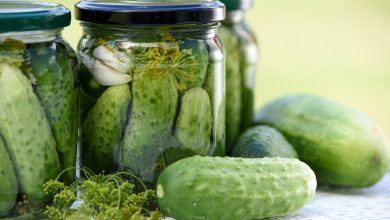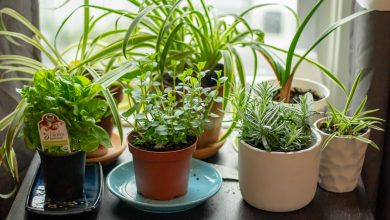How Do Almonds Grow?: How to Plant and Grow an Almond Tree

Almonds have been making a name for themselves for thousands of years, stretching all the way back to 1400 BC when mentioned in the Bible and probably long before then. You can find these impressive nuts in dinners, desserts, enjoyed as wholesome snacks, and even as milk. It’s honestly no surprise that the almond industry is valued at over five billion dollars!
But what about growing almond producing trees in your home garden? You’ll be pleasantly surprised at how easy the process is! We’ve cultivated a step-by-step process for planting almond trees below. Follow along, and you’ll be harvesting your own almonds in no time.
What Do Almond Trees Need to Grow?
Let’s start with the basics. While planting almond trees is simple, certain elements are necessary to stimulate proper growth. It’s essential to familiarize yourself with the individual needs of almond trees before starting the process.
- Soil Needs: Choose a sand-based soil to promote good drainage during the tree’s growth.
- Fertilizer Needs: Almond trees do best in fertilizer that is considered balanced. Look for a fertilizer with equally balanced potassium, nitrogen, and phosphorous, or a 10-10-10 ratio.
- Light Needs: Almonds require a lot of sun to thrive and grow. Plant your almond trees in full sun for maximum growth.
- Water Needs: Fortunately, almond trees won’t break the bank with water consumption, as they require only average watering.

Planting Your Almond Trees
Now that you’re a little more familiar with almond trees, it’s time to get started with planting! We’ve narrowed planting of your new trees down to eight simple steps:
Step 1: Plot out where your tree(s) will be grown. Remember, optimal growth is achieved in full sun. Almond trees also really prefer their space; if you’re growing more than one tree, space them about 15-20 feet apart.
Step 2: The roots of almond trees can be a bit sensitive. Prior to planting your tree sapling, spray down the roots with water. The planting hole should be just wide enough and deep enough to accommodate the root system from the bottom base of the plant.
Step 3: When refilling the planting hole, firmly press the soil into place as you go. Your baby almond tree should be very firmly placed into its new home.
Step 4: Give your new tree a healthy drink of water right after planting is completed; one to two buckets should do the trick.
Now that planting is completed, it’s time to wait for your almond tree to blossom! Waiting might be the hardest part, unfortunately, as almond trees can take from five to twelve years to mature and produce almond seeds. Luckily, your tree has the potential to produce almonds for up to 25 years, and we have some expert maintenance tips to keep you busy in the meantime.
Maintaining Almond Trees
The success in growing your almond tree all comes down to proper care and maintenance. Here are some maintenance tips to keep your trees healthy and developing on track:
- Watering: Almond trees are considered drought-tolerant, which means their watering needs aren’t extreme. You can get by during the hotter months with watering your trees about every two weeks with three to four inches of water. During the fall, your almond trees only require about two to two and a half inches of water every two weeks. During the winter, your trees hardly need any water at all; give your trees about an inch of water as needed throughout the colder months.
- Pruning: Pruning your almond trees year-round is extremely important. Be sure to regularly clear weeds, dead limbs, and any other debris from your trees to keep them in good shape. That being said, almond trees don’t do much grow growing in the colder winter seasons; however, it’s imperative that extra attention is paid to pruning during this time to limit light restrictions and allow for minimal growth to occur still.
- Fertilization: During the spring season, your almond trees should be regularly fertilized with a balanced fertilizer. Doing this will allow your almond trees to maximize their growth while soaking up the water and sunshine that springtime brings. It would be best if you kept up fertilization efforts throughout the warm summer months, only stopping once fall harvest season arrives.
- Pest and Fungal Control: Almond trees are susceptible to pests and fungal growths and diseases. To keep your trees in good shape, watch out for signs of insect infestations or fungal infections such as verticillium. Various oil sprays and other natural pesticides can help protect your tree from damage.

Harvesting Almonds
The long-awaited harvest time has finally arrived! Luckily, harvesting almond nuts is pretty straightforward. For best results, it’s recommended that you wait for the nuts to split open three-quarters of the way before harvesting. Simply lay down a large tarp or sheet beneath the almond tree being harvested and give the limbs a firm but gentle shake to loosen the nuts and prompt them to fall. Time to enjoy the fruits (or nuts, rather) of your hard labor!
Pro Tips
Just as with any plant, certain tricks can help your almond trees along the way. We’ve gathered some pro tips for you below:
- When pruning your almond tree, always use clean tools and machinery, as almond trees can quickly become infected with bacterial diseases. By using clean tools, you can reduce the risk of infection, similar to the human body.
- While almond trees are lovely additions to many home gardens and yards, they are actually picky about the climate in which they’re grown. Hot and dry conditions are best for almond growth because they allow the trees to have more extended periods for growth in the warmers seasons and prevent overwatering. Almond trees do still require a moderate amount of cold, however, which means more tropical environments should be avoided. West coast states, such as California, or eastern states are best for almond trees.
- Watch out for the type of almond seeds or plants you purchase. While almond trees are best known for the delicious nuts they produce, there are specific types of bitter almond trees that are just for looks. Look for the “carmel,” “all-in-one,” “Hall’s Hardy,” or “mission” almond tree varieties to ensure you’ll be harvesting edible nuts down the road.
- If you’re growing your almond tree from the nut instead of a sapling, don’t use store-bought roasted versions. Your best bet is to find a freshly harvested almond nut and then refrigerate it in a wet paper town for about a month. Following refrigeration, you should have a nice sprout that can then be planted and grown inside a pot, before eventually being moved to your garden once it’s about six inches in height.
- Almond growers tend to prune almond trees into the shape of a vase, also called “open-center pruning.” This process essentially means the base of the tree has three or four main branches on each side, but the center is left open and with a spring amount of branches. This version of pruning can help with almond tree growth by allowing it to gain more oxygen and light saturation, which strengthens the tree systems.
- Expect your almond trees to be ready for harvest around late summer to mid-fall. As previously mentioned, watch for the nuts to split three-quarters of the way before harvesting. If all has gone according to plan with growth, you could be looking at getting up to 65 pounds of almonds from just one tree!
- Don’t consume your almonds right off the tree; almond nuts need to be dried thoroughly before eating. Luckily, you can accomplish this easily by simply leaving the shaken almonds on the ground for an extra day or two or storing them in a cool and dry place indoors. Harvested almonds can be stored for about eight months.
- It’s recommended that you plant a minimum of two almond trees at a time. Almond trees rely on a process called “cross-pollination” to maximize the production of their fruits, meaning these trees help each other out by pollinating the other tree. This process can be done through the wind or by bees. There are versions of almond trees that self-fertilize, but they are rarer.
- During their peak times of growth, almond trees can grow quite a bit and rely on regular water sources to maintain growth. Be sure to watch for local signs of drought and keep your tree watered regularly with about two to three inches of water each week.
- Take care to plant your almond trees in the spring once temperatures have risen. By doing this, you’ll maximize the time your tree has to grow and establish roots before the colder months set in.



